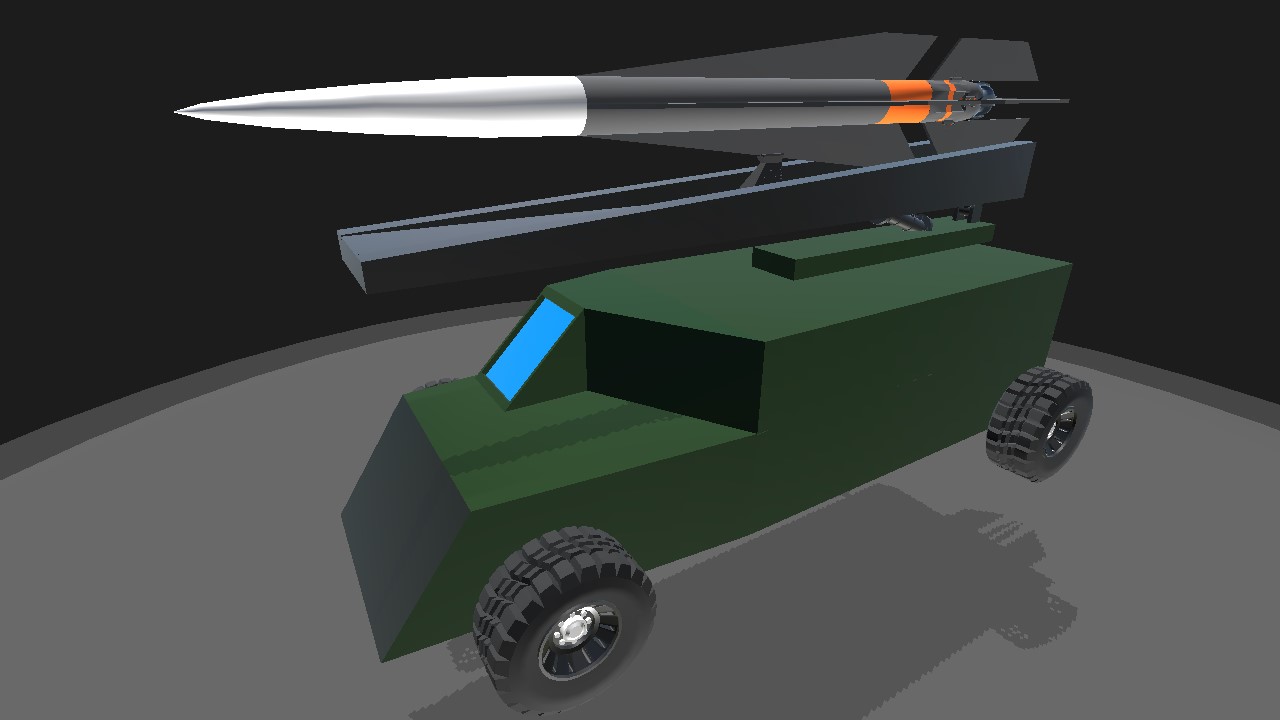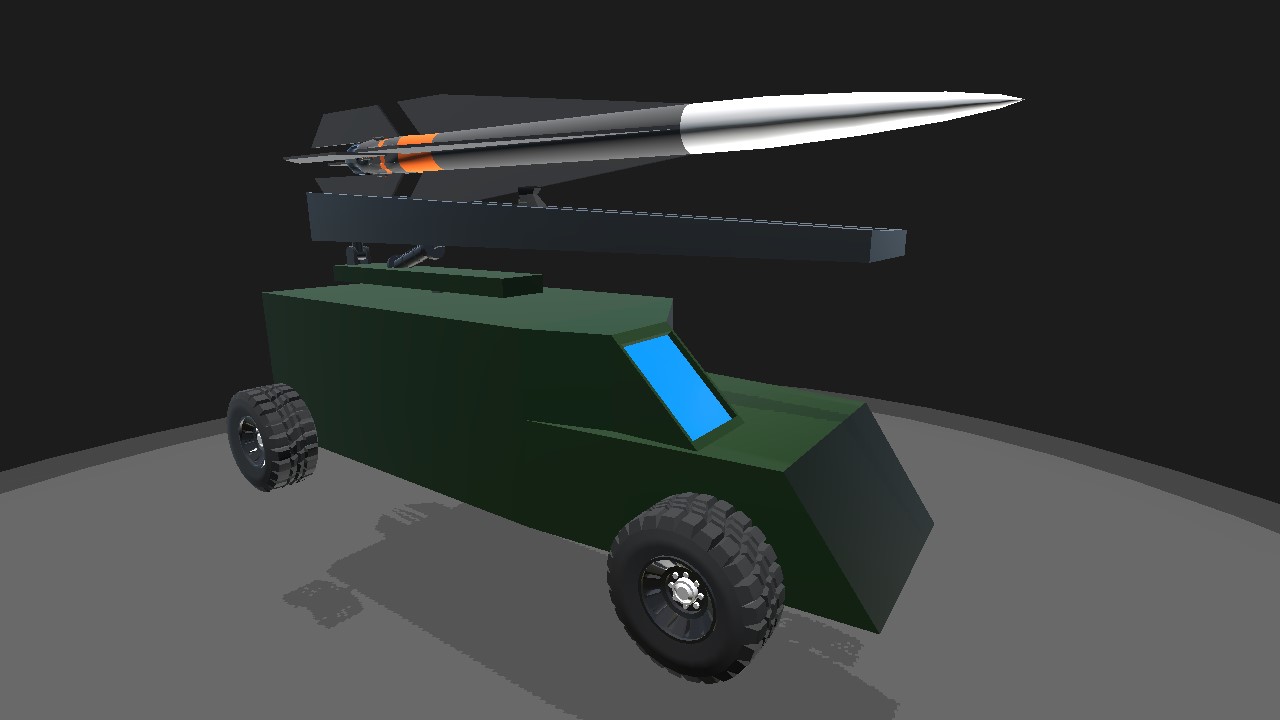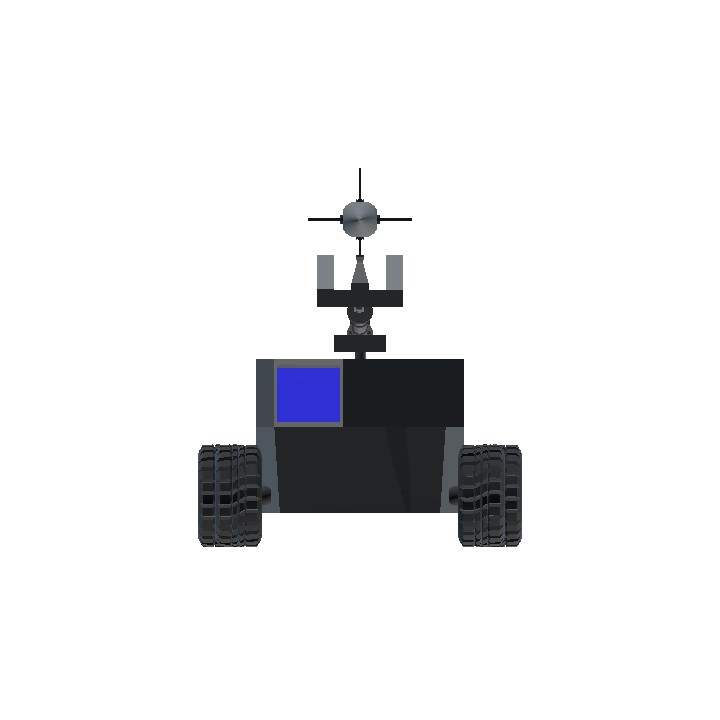The MIM-124 Abuela is a lightweight SAM platform intended to engage single high priority targets while remaining extremely mobile. The MIM-124A La Chancla Missile is command guided and cannot be fooled by flares or chaff, making it extremely useful for targets that require a high hit probability. Adding to its flexibility, the command-guided missile can switch targets mid-flight as the combat picture changes.
LAUNCH INSTRUCTIONS:
1. Move vehicle with throttle and yaw for steering
2. Select a target to deploy launch system and automatically slew to target
3. Activate group 1 when launcher is lined up to target
4. Missile will throttle up and launch after a 1 second delay
IN-AIR INSTRUCTIONS:
- Missile will guide automatically as long as group 1 is active
- To take over manual control, deactivate group 1 and control with pitch and yaw
- Missile will detonate at nearest pass to target within 100m, no direct hit is needed
- It is highly recommend to slow down time before impact (especially on mobile) to ensure the Funky Trees code behind detonation has the time to process target distance and closure rate
- To test proximity detonation functionality, disable group 1 on terminal approach to take over control and manually fly within 100m of selected target
The MIM-124A La Chancla Missile is a Suface-to-Air version of the AIM-108 Firebird and packs a larger amount of fuel in a lengthened fuselage to allow for greater range from ground launches using its 50 second burn time. The missile is entirely guided by Funky Trees code and uses no stock guidance. Once launched, the missile uses three guidance modes to intercept target based on target range.
At ranges above 7500m, the missile uses its long range guidance logic that prefers lower angle of attack maneuvers and wider turns to minimize energy loss to induced drag. Depending on how far away the target is, the missile will also fly along a loft profile to maximize range against far targets and clear any ground terrain. This loft profile will put the missile above target at all medium and long range launches, During this stage, the rocket motor will fire at full throttle to build energy for the terminal stages of intercept.
Once at 7500m separation to target, the guidance profile will continue to loft, but the loft profile will become less aggressive as range closes further. The missile will still prefer using wider turns to make corrections to minimize speed loss at this stage. The rocket motor will no longer burn at full thrust and will instead manage the thrust to attempt to keep closure rate at around 500-600m/s to target.
After hitting 2000m from target, the missile will no loner prefer wide turns and will track the target much more aggressively, making course corrections immediately to stay on intercept course. As this range closes, the control surface deflection angle is reduced to prevent over-correction as intercept angles change more rapidly. The rocket motor continues to attempt to hold closure rate in this last stage of guidance.
Once the missile impacts or passes by target, the proximity sensor in the nose sends a detonation command to the 2 warheads mounted in the nose and near the base of the fuselage. This is not based on absolute target distance, but instead uses target closure rate to determine the closet possible distance from target to detonate. The missile must pass within a minimum of 100m from target for the proximity sensor to send a detonation command. If you want to test the proximity function, then just select a target and fly the missile manually to intercept. The proximity detonation works regardless of if the guidance logic is active or not.
Specifications
General Characteristics
- Created On Android
- Wingspan 7.5ft (2.3m)
- Length 17.1ft (5.2m)
- Height 8.9ft (2.7m)
- Empty Weight 6,482lbs (2,940kg)
- Loaded Weight 10,581lbs (4,799kg)
Performance
- Power/Weight Ratio 0.637
- Wing Loading 413.9lbs/ft2 (2,021.0kg/m2)
- Wing Area 25.6ft2 (2.4m2)
- Drag Points 2902
Parts
- Number of Parts 48
- Control Surfaces 0
- Performance Cost 409






